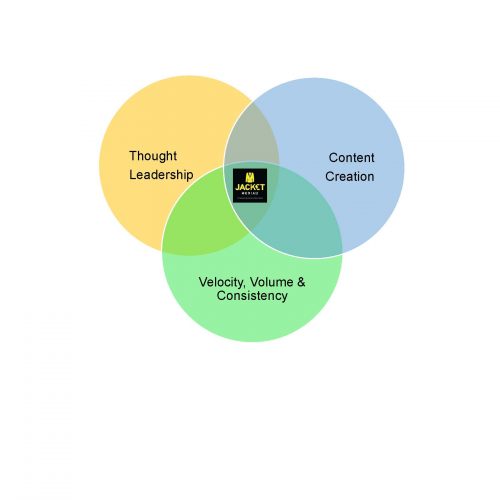The integral roles of logistics and manufacturing are inextricable. While there are frequent stories of irreconcilable differences, the reality is products manufactured must be delivered to customers. What has changed is how the media communicates this precarious marriage to an audience that consumes information with alacrity, velocity, and Google searches.


Lew Weiss, founder of Jacket Media Co, host of Manufacturing Talk Radio and publisher of Manufacturing Outlook.
No longer is content consumed as a form of education, professional development, or comparative analysis. Solution-seekers perform a Google Search, find matches based on the algorithms of search engine optimized rankings. There is no triangulation. Top ten rankings constitute information gathering, little else. Out of sight, out of mind.
This is neither good nor bad; it is. In this vast media paradigmatic shift, survivors of the media miasma live by the maxim: eat or be eaten. Many in the media have failed to look ahead. Many keep running content that could have been authored twenty years ago. No contemporaneous insights, contexts, or prognostication are offered. Just more of the same.

Thomas R. Cutler, who founded the 9000+ member Manufacturing Media Consortium in 1999 and has authored more than 8000 articles in that time span; he has been working with Jacket Media Co for some time as a regular contributor to our most popular publication Manufacturing Outlook. Cutler brainstormed with me and contributed to the report which follows. Tom has seen all the media shifts, the transition to conference content, webinars, YouTubes, and yes, TikTok.
Balancing media coverage: forward thinking and providing a microphone
Profitable media outlets including Jacket Media Co must balance the editorial trendspotting with those of paid sponsors, content contributors, and podcast hosts and guests.

The function of marketing has changed. It used to be building brand and product awareness and acquiring lead generation, particularly through digital and traditional methodologies. The marketing role is far more engaged in the industrial complex responsible for bottom line growth as an integral part of the “sales AND marketing” effort. Salespeople are rarely responsible for following up with prospects except via LinkedIn or those about to issue a purchase order in 90 days. They are bonused and rewarded on closed activities, not advancing the longer-term sales pipeline.
Even when a PR firm is engaged, 90% of these firms have no prior relationships with members of the Manufacturing Media Consortium and are therefore pitching. Cutler reports that 100% of editorial pitches are summarily discarded when sent from an unknown source. Alternatively, those emails get sent to advertising or sponsorship departments to sell revenue generating space. Without the prior relationships and without successful demonstration of content creation by a PR firm, it is a waste of time and money. Anyone can pitch a story, few know the culture of the publications, the readers, and the editors’ expectations. This is where expertise in content creation, succinct and precise communication, and dynamic storytelling become a paramount function whether handled internally or externally by a PR firm.
The media kit is dead (or should be)
The fluidity of world events makes the media kit anachronistic. Two years ago, few spoke about supply chain disruption, Ukraine, oil prices, inflation, the great resignation, cybersecurity challenges, and high-level robotics. Now those topics are omnipresent. Any media calendar that was prepared in Fall of 2021 would have missed all these topics.
All editorial has multiple purposes for the reader, the publishers, and the company (paying sponsor). Ultimately, most want to know how manufacturers succeeding now and can improve moving forward. To state the obvious, potential disruptions to industrial business operations keep growing every day. There is (and will continue to be) a shortage of skilled workers. Risks are rising and difficult to mitigate. Supply chain disruptions are coming from all sides (promulgating the conversation of nearshoring).
And still these best-practice operations are failing to tell their stories. They are failing to profile their leaders, and they are failing to use the new media methodologies that all GenZers have grown up with and utilize for hours a day. This failure to connect with the new generation of communication portends a dismal outlook without immediate corrective action.